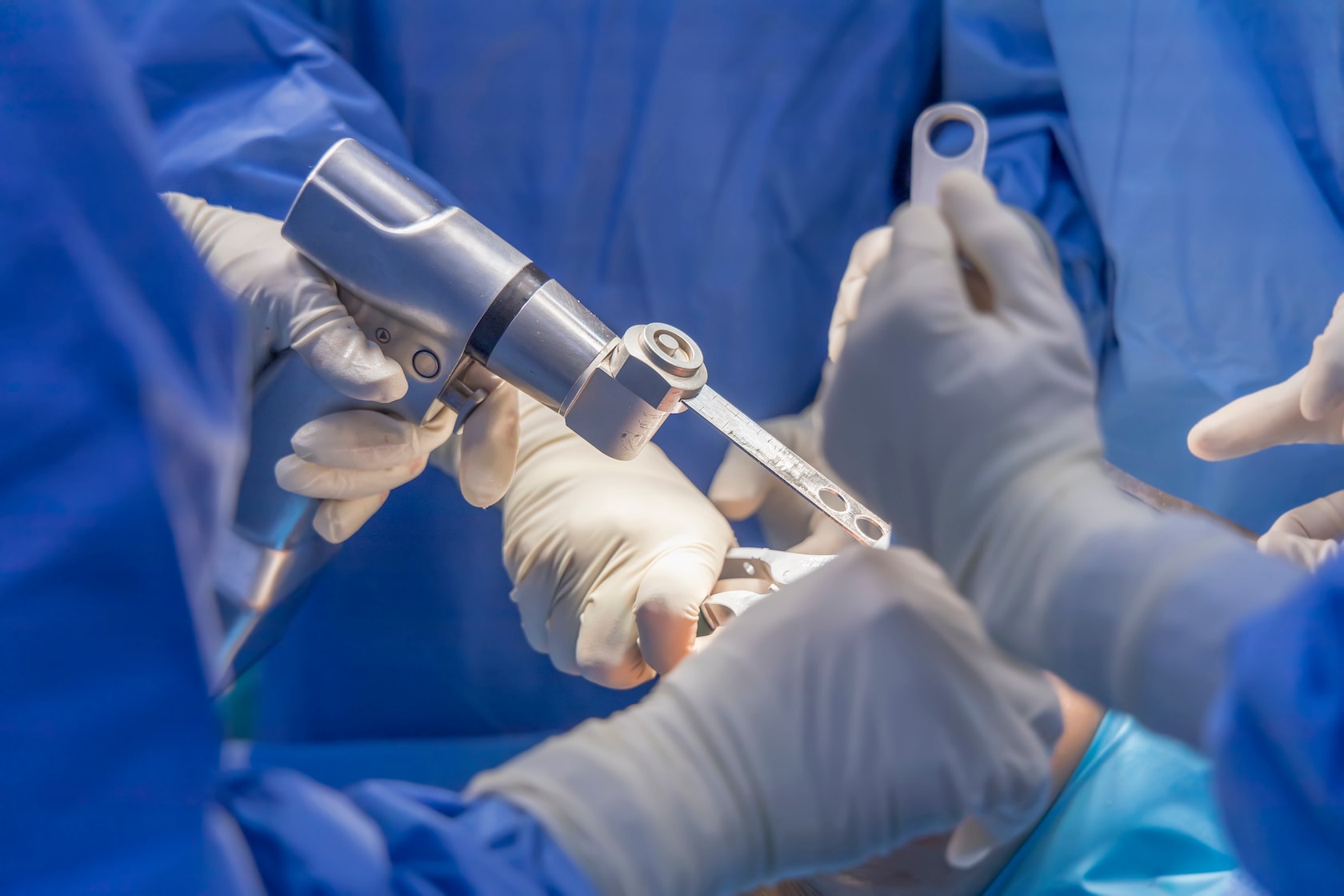When facing the decision of whether to undergo knee arthroplasty, commonly known as knee replacement surgery, it’s crucial to weigh the potential for a pain-free, more mobile life against the risks of surgical complications. present a balanced view that outlines what you can expect from the surgery, the transformative impact it may have on your day-to-day activities, and the importance of considering the associated risks. Plancher Orthopaedics breaks down the complexities of the procedure and the recovery process, giving you the insights needed for an informed choice about your knee’s future.
Key Takeaways
- Knee arthroplasty, commonly known as knee replacement surgery, is intended to alleviate severe knee pain and improve quality of life, with variations including Total Knee Arthroplasty (TKA) and Partial Knee Arthroplasty (PKA) designed for different patterns and severities of arthritis.
- The procedure typically results in significant pain relief and improved mobility, with an overall positive impact on mental health and quality of life; knee implants are generally durable, lasting 15-20 years with high success rates.
- Potential risks such as blood clots, nerve damage, infection, and the need for revision surgery must be recognized; the decision to undergo knee arthroplasty involves assessing these risks, understanding the expected benefits, and careful pre- and postoperative planning.
Understanding Knee Arthroplasty
Knee arthroplasty, also known as knee replacement surgery, serves as a beacon of hope for those suffering from severe knee arthritis. This modern medical procedure involves replacing damaged knee joint surfaces with artificial components, aiming to alleviate pain and improve the quality of life for patients. The knee, an engineering masterpiece in its own right, is a complex joint consisting of bones, ligaments, and cartilage, all of which can succumb to the relentless wear and tear of life.
The decision to undergo this procedure is a serious one, generally rooted in severe pain, specifically severe knee pain, and a substantial loss of joint function that significantly disrupts a person’s quality of life. No longer exclusive to the elderly, knee arthroplasty now offers solace to younger patients as well, reflecting advancements in surgical techniques that promise reliable outcomes even for those in the prime of their lives suffering from end-stage degenerative knee osteoarthritis.
Total vs. Partial Knee Replacement
When it comes to knee replacement surgery, one size does not fit all. Total knee replacement, a more common variant, is typically recommended for patients whose arthritis has taken a toll on multiple compartments of the knee. On the flip side, partial knee replacement is tailored for those with ‘unicompartmental’ arthritis, where the damage is localized to one particular section of the knee. Only about 10% of knee replacement patients fall into the category suitable for partial knee replacement, highlighting the specificity required in selecting the right type of procedure.
There are several variations of total knee arthroplasty, including:
- Cruciate-Retaining
- Posterior-Stabilized
- Medially Stabilized
- Hinged types
Each is designed to imitate the knee’s natural movements and is suitable for different severities and patterns of arthritis. Understanding the types of knee arthroplasty procedures—Total Knee Arthroplasty (TKA) and Partial Knee Arthroplasty (PKA)—is the first step toward a pain-free new knee.
The Goal of Knee Arthroplasty
The primary objective of knee arthroplasty is to alleviate debilitating pain and restore mobility. Imagine the joy of participating in activities like walking, swimming, and cycling with minimal limitations, a reality that is well within reach for most patients post-surgery. The numbers speak for themselves: more than 90 percent of individuals who undergo total knee replacement surgery report substantial relief from pain, if not complete eradication.
Picture the knee arthroplasty as a gateway to a revitalized existence, where every step is no longer a reminder of pain but a testament to the wonders of medical science. By replacing the damaged thigh bone and other joint components, the goal is simple yet profound—enhance the quality of life, one knee at a time.
The Benefits of Undergoing Knee Arthroplasty
Entering the realm of knee arthroplasty presents a range of potential benefits for those suffering from conditions like rheumatoid arthritis. The relief from the shackles of knee pain is just the beginning; improved mobility and function await those who choose to undergo this transformative surgery. Picture yourself engaging in the simple pleasures of life—gardening, playing with your grandchildren, or taking a serene walk in the park—now within your comfortable reach.
The narrative of knee replacement is one of redemption, where each step is not just a physical stride but a leap toward an improved quality of life. It’s a journey from the confines of chronic pain to the liberation of mobility, where every day is an opportunity to live life to the fullest.
Long-term Durability and Success Rates
Knee implants are not fleeting companions; they are long-term allies in your journey to a pain-free life. With an impressive lifespan of 15 to 20 years, these marvels of medical engineering promise a sustained respite from knee pain. The stories of success are abundant, with:
- 90-95 percent of total knee replacements thrive even a decade after surgery
- 98% functioning effectively after 10 years
- over 80% functioning effectively after 20 years
Looking further down the road, the statistics remain favorable.
Although partial knee replacements may have a higher ten-year survival rate, total knee replacements prove to be durable in the long term, often lasting over two decades. This longevity, coupled with high success rates, paints a picture of knee arthroplasty as a reliable and enduring solution for those plagued by severe knee pain.
Impact on Mental Health and Quality of Life
The effects of knee arthroplasty reach beyond the physical; they also impact mental well-being. The alleviation of chronic pain that comes with a successful knee procedure has a domino effect, culminating in an uplifted state of mind. Regaining a sense of independence is not just liberating; it’s transformative, contributing to an enhanced quality of life that radiates through every facet of one’s existence.
The interconnection between physical relief and mental health is profound. As mobility restores and chronic pain dissipates, patients often find themselves basking in a newfound satisfaction with life—a testament to the holistic benefits of knee arthroplasty and its role in pain relief. The journey to a new knee is, in essence, a journey to a new lease on life, both physically and mentally.
Recognizing the Risks Associated with Knee Arthroplasty
Although knee arthroplasty often results in success, it’s vital to understand and acknowledge the potential risks associated with the procedure. Complications such as blood clots, nerve damage, and infection, though infrequent, are part of the landscape that must be traversed with care. Age and overall health are the compasses that can sway the likelihood of encountering these hurdles.
Awareness is the key to a safe journey through knee replacement surgery. While the risks are present, they are not insurmountable. Damage to blood vessels, nerves, or ligaments surrounding the knee joint, though rare, can occur, with each risk carrying its own set of challenges and solutions. It’s a narrative of preparedness, where understanding the potential pitfalls paves the way for a smoother recovery.
Infection and Blood Clots
Following knee arthroplasty, it’s crucial to remain vigilant, especially regarding potential risks of infection and blood clots. Symptoms such as escalating pain, swelling, or unusual warmth around the knee can signal the onset of these unwanted guests. But fear not, for with proper postoperative care and a watchful eye, these risks can be managed and mitigated effectively.
Prevention is woven into the pre-surgery tapestry, with measures such as avoiding dental procedures for a strategic window of time to shield the new knee joint from the threat of infection. A tale of caution and proactive care, the journey through knee arthroplasty can be navigated safely with the right precautions in place.
Implant Issues and Revision Surgery
As with any tale of transformation, the story of knee arthroplasty includes chapters on resilience and the occasional need for revisions. Implant issues such as loosening, a common foe in the long-term saga of knee replacements, may call for a return to the operating theater. The harbingers of such events can often be unveiled through the lens of an X-ray, allowing for earlier intervention and, potentially, a simpler surgery.
When whispers of implant complications or infections reach a crescendo, knee revision surgery enters the stage as the protagonist, ready to restore harmony to the joint. It’s a narrative of continuous care, where the journey with your new knee is one of partnership, with regular check-ups ensuring that the story has a happy continuation.
Preparing for Knee Arthroplasty
Preparing for knee arthroplasty sets the stage for a successful outcome, beginning with a thorough evaluation of the patient’s health. A clinical examination, a review of medical history, and an X-ray analysis lay the foundation for a well-planned surgical journey. Modifications to the patient’s home and life, such as securing grab bars and ridding spaces of tripping hazards, are the preparatory steps that ensure the plot unfolds smoothly post-surgery.
In the orchestra of preparation, assistive devices like walkers or crutches are the instruments that support the melody of recovery, with insurance coverage and community resources playing a harmonious role in their accessibility. It’s a narrative of careful planning, where each step taken before the surgery is a step towards a successful recovery.
Medical and Health Optimization
Before proceeding with knee arthroplasty, a comprehensive orthopaedic evaluation, including a detailed physical exam and diagnostic imaging, must be conducted. A full medical evaluation, including an electrocardiogram, chest X-ray, and lab work, ensures that the patient is ready for the transformative experience of knee replacement surgery. Iron supplementation may be the unsung hero in this prelude, fortifying the patient’s blood supply and potentially sidestepping the need for transfusion during the operation.
Weight loss goals and improved fitness levels are the rehearsals that lead to a swifter recovery, with preoperative care that includes physical therapy planning to set the tempo for post-surgery success. It’s a narrative of optimization, where the body and mind are tuned to their best possible state, ready for the symphony of surgery.
Patient Education and Expectation Management
The script for knee arthroplasty requires not just reading, but understanding. Grasping the intricacies of the surgery and recovery process is pivotal before one decides to step onto the stage of knee replacement. A repertoire of educational resources, including classes, videos, and comprehensive guides, is available to assist patients in preparing for surgery and understanding what the post-operative act entails.
Managing expectations is akin to setting the stage for a standing ovation. Patients who maintain realistic expectations regarding activities and recovery times are more likely to be satisfied with their new joint. It’s a dialogue of education and understanding, where clear communication with health professionals illuminates the path from pre-surgery to recovery, easing concerns and fostering an informed decision-making process.
The Knee Arthroplasty Surgical Experience
The day of knee arthroplasty marks a significant milestone in the patient’s journey, characterized by meticulous precision and care. Regional anesthesia often sets the scene, offering numbness from the waist down, creating a comfortable experience for the patient as they transform their knee joint. The surgical procedure unfolds with:
- an incision
- the removal of damaged cartilage and bone
- the preparation of bone surfaces
- the grand finale of inserting the prosthesis, with metal and plastic parts making their debut to replace the joint surfaces.
A standard total knee replacement surgery, lasting approximately 80 minutes, is a testament to the efficiency and expertise of the surgical team. The steps involved in the surgery include:
- Making an incision in the knee to access the joint
- Removing damaged cartilage and bone
- Resurfacing the joint with metal and plastic components
- Cementing the prosthetic into place
- Closing the incision
This marks the end of one journey and the beginning of another.
Anesthesia Choices and Surgical Techniques
Anesthesia choices and surgical techniques are the brushes with which the masterpiece of knee arthroplasty is painted, each tailored to the individual’s unique needs and health status. The selection of the surgical technique and the artificial joints themselves are carefully curated based on a multitude of factors, including:
- the patient’s age
- weight
- activity level
- the unique structure of their knee
The skill of a fellowship-trained and experienced knee replacement surgeon is akin to that of a master artist, ensuring that the surgical technique is executed with precision, thereby minimizing knee-specific risks during the procedure. It’s a narrative of customization, where the approach to surgery is as personalized as the patient’s own story, ensuring that the outcome is not just successful, but also a reflection of their unique needs.
Postoperative Care and Recovery Journey
The final act of the knee arthroplasty performance may conclude in the operating room, but the encore that follows is critical to the symphony’s success. Postoperative care is a meticulous composition involving:
- pain management
- physical therapy
- wound care
- vigilant monitoring for possible complications
The narrative here is one of healing, where the surgical incision is treated with the utmost care, kept clean and covered, following the surgeon’s precise instructions.
As swelling and discomfort are natural in the early scenes of recovery, methods such as:
- elevation of the knee above the heart level
- physical therapy, which may begin on the very day of surgery, encourages patients to walk and bear weight on their leg as soon as it is feasible, fostering independence and strength
- mobility aids such as crutches or walkers
These methods play a starring role in providing relief, reducing swelling, and helping to relieve pain as the patient takes their first postoperative steps.
Physical Therapy and Rehabilitation
Physical therapy and rehabilitation are not merely stages in the process of knee arthroplasty; they serve as the foundations of recovery. A skilled physical therapist guides the patient through the labyrinth of exercises, ensuring a progression in mobility and knee function that is both safe and effective. The journey from using a walker or crutches to engaging in home exercises and outpatient physical therapy is a carefully charted course toward improved walking and range of motion.
Patients are educated on activity precautions, learning to maneuver through daily life with medical equipment that aids in recovery while adhering to surgeon-recommended precautions to prevent strain on the joint. The reintroduction to low-impact sports is advised, while high-impact activities take a back seat to preserve the longevity of the implant and the integrity of the knee. It’s a story of reawakening, where each physical therapy session brings the patient closer to a life where chronic pain is but a distant memory.
Long-Term Care for Your Knee Implant
Living with a knee implant is a lifelong commitment that, like any lasting alliance, necessitates care, attention, and regular check-ups to ensure ongoing success. Engaging in low-impact activities such as walking, swimming, and cycling nurtures the health and functionality of the knee implant, much like tending to a garden nurtures the growth of its plants. Comprehensive long-term care is the continuous thread that weaves through the fabric of life with a knee replacement, encompassing regular check-ups, exercise, maintaining an appropriate weight, and taking preventative measures against potential complications.
The narrative of long-term care is one of harmony between lifestyle choices and the health of the knee implant. Regular follow-up visits with the surgeon are akin to routine servicing for a car, ensuring the knee continues to perform at its best. It’s a tale of maintenance, where the commitment to exercise and weight management is as crucial as the initial decision to undergo knee arthroplasty.
Exercise and Weight Management
The longevity of a knee implant is a dance that is choreographed with careful steps of exercise and weight management. Activity levels and weight are the lead dancers in this performance, influencing the implant’s durability and the quality of life of the patient. Maintaining a healthy weight post-surgery is not merely a suggestion; it is an integral part of the choreography that can extend the life of the knee implant and enhance the performance of the joint.
Patients are encouraged to engage in the following activities to promote the health of their implant and ensure the longevity of their knee replacement:
- Weight management
- Regular exercise
- Low-impact activities such as swimming or cycling
- Strengthening exercises for the muscles around the knee
- Following the advice and recommendations of their healthcare provider
By maintaining a healthy, active lifestyle, patients can support the vitality of their knee replacement and enjoy a better quality of life.
Making an Informed Decision on Knee Arthroplasty
Deciding to undergo knee arthroplasty is a serious choice; it involves personal considerations, health factors, and the desire for a life free from chronic pain. Weighing the risks and benefits, understanding the personal health circumstances, and evaluating the potential impact on future quality of life are the threads that must be woven together to form a tape of informed choice. It’s a narrative of discernment, where the perspective of the patient is sculpted by their experiences, social influences, and the expert advice of medical professionals.
An informed decision about knee arthroplasty is the culmination of:
- thorough consultations with the surgeon
- addressing personal health factors
- evaluating if alternative treatments might be a more suitable prelude to surgery
It’s a conversation that unfolds over time, one in which the patient’s voice is paramount, and the surgeon’s expertise is the guiding light.
Consultation with Orthopaedic Surgeons
The consultation with an orthopaedic surgeon is a pivotal scene in the journey toward knee arthroplasty. During this consultation, the following will occur:
- Detailed knowledge about the procedure will be shared
- The patient’s individual health conditions will be explored in depth
- Trust in the orthopaedic surgeon’s expertise and their ability to communicate the nuances of the surgery will be established
- Tailored information will be provided, setting realistic expectations for recovery
- The surgical plan will be aligned with the patient’s unique health status
This consultation forms the foundation of the patient’s decision-making process and ensures that they are well informed and prepared for the surgery.
It’s a narrative of collaboration, where the surgeon and patient together chart the course towards a successful knee replacement. The surgeon’s knowledge and experience serve as the compass, navigating the patient through the ocean of decisions, and ensuring the chosen path is aligned with the patient’s health goals and lifestyle.
Resources and Support Systems for Patients
A wealth of resources and support is available for patients embarking on the transformative journey of knee arthroplasty. Support groups, in-house medical and physical therapy services, and social support services play a crucial role in the full recovery and ongoing support for patients. Institutions like the American Academy of Orthopaedic Surgeons (AAOS) and the American Joint Replacement Registry (AJRR) are instrumental in tracking the long-term performance and durability of knee implants, providing a wealth of knowledge and assurance for patients.
Specialized institutions like Plancher Orthopaedics & Sports Medicine stand as pillars of personalized patient care, offering advanced knee procedures, tailored healing steps, and a comprehensive approach to care that spans multiple medical and surgical specialties. It’s a narrative of support, where patients are not alone in their journey; they are surrounded by a community that provides guidance, encouragement, and expertise every step of the way.
Summary
In the grand narrative of knee arthroplasty, each chapter—from understanding the procedure, weighing its benefits and risks, preparing for surgery, and embracing the surgical experience, to navigating recovery and long-term care—plays a crucial role in the patient’s journey to a pain-free life. With the right information, support, and care, patients can make informed decisions that lead to improved mobility, quality of life, and mental well-being. Contact Plancher Orthopaedics and start your journey to a better quality of life with knee arthroplasty!
Frequently Asked Questions
How long does a knee replacement typically last?
A knee replacement typically lasts 15 to 20 years, with a high percentage of patients experiencing successful outcomes years after surgery.
Can knee arthroplasty improve my mental health?
Yes, knee arthroplasty can improve mental health by reducing chronic pain and helping restore independence, which leads to a better quality of life and overall satisfaction.
What are some risks associated with knee replacement surgery?
Knee replacement surgery poses risks such as infection, blood clots, implant issues, nerve or blood vessel damage, and the need for further surgery due to complications. It is important to be aware of these potential risks when considering the procedure.
Is physical therapy necessary after knee arthroplasty?
Yes, physical therapy is necessary after knee arthroplasty to help regain mobility and function post-surgery. Starting the therapy early in the recovery process is important for optimal results.
When can I expect to return to normal activities after knee replacement surgery?
You can expect to return to normal activities around six weeks after knee replacement surgery, but full recovery may take up to a year, varying based on your progress and the type of activities involved.





 William D. Murrell, MD
William D. Murrell, MD Thomas B. Evely, DO
Thomas B. Evely, DO Clifford Voigt, MD
Clifford Voigt, MD Karthikeyan Chinnakkannu, MD
Karthikeyan Chinnakkannu, MD Max N. Seiter, MD
Max N. Seiter, MD Demetris Delos, MD
Demetris Delos, MD Lauren M. Fabian, MD
Lauren M. Fabian, MD